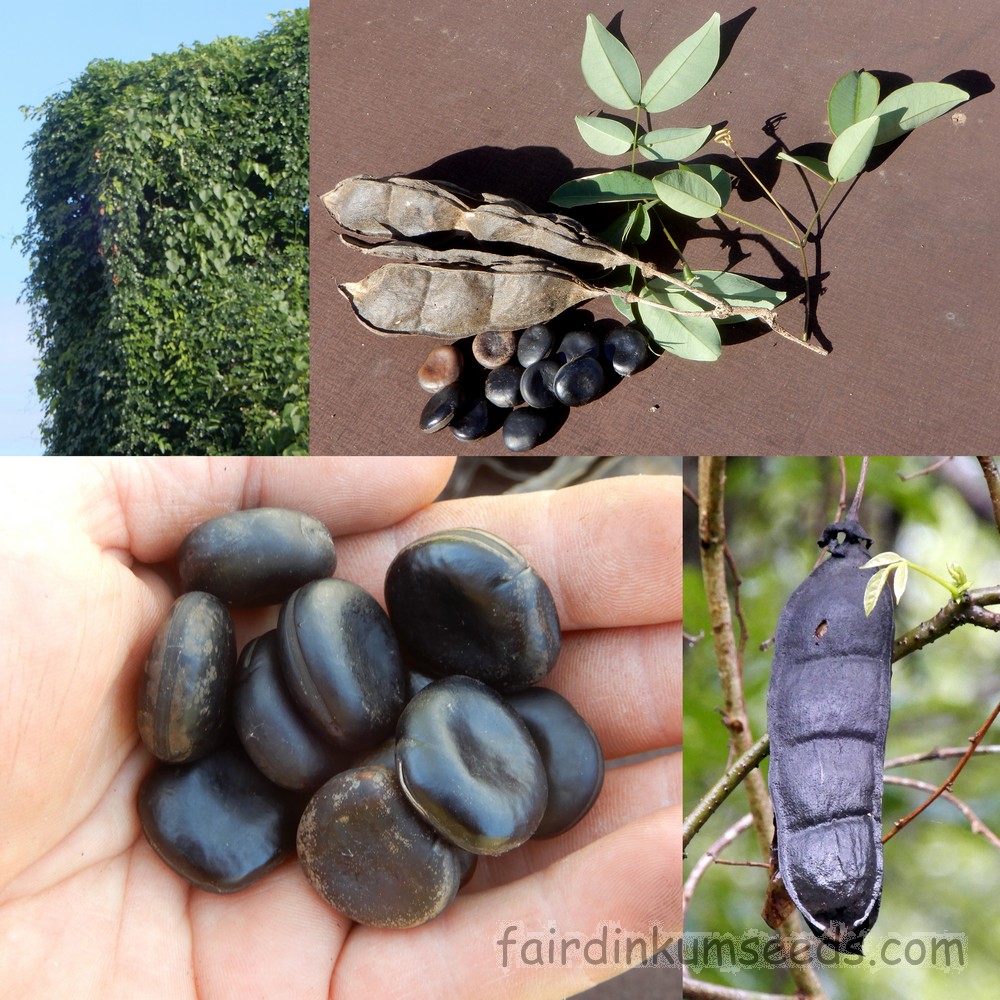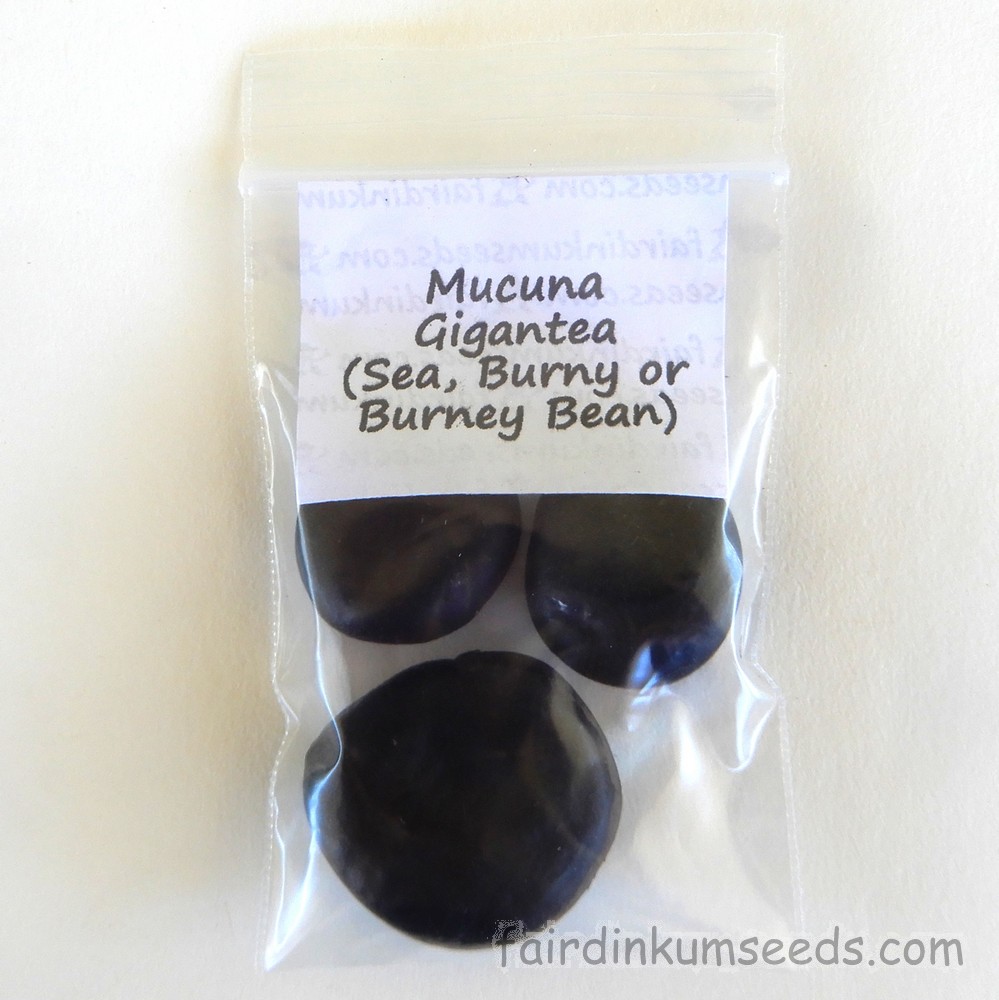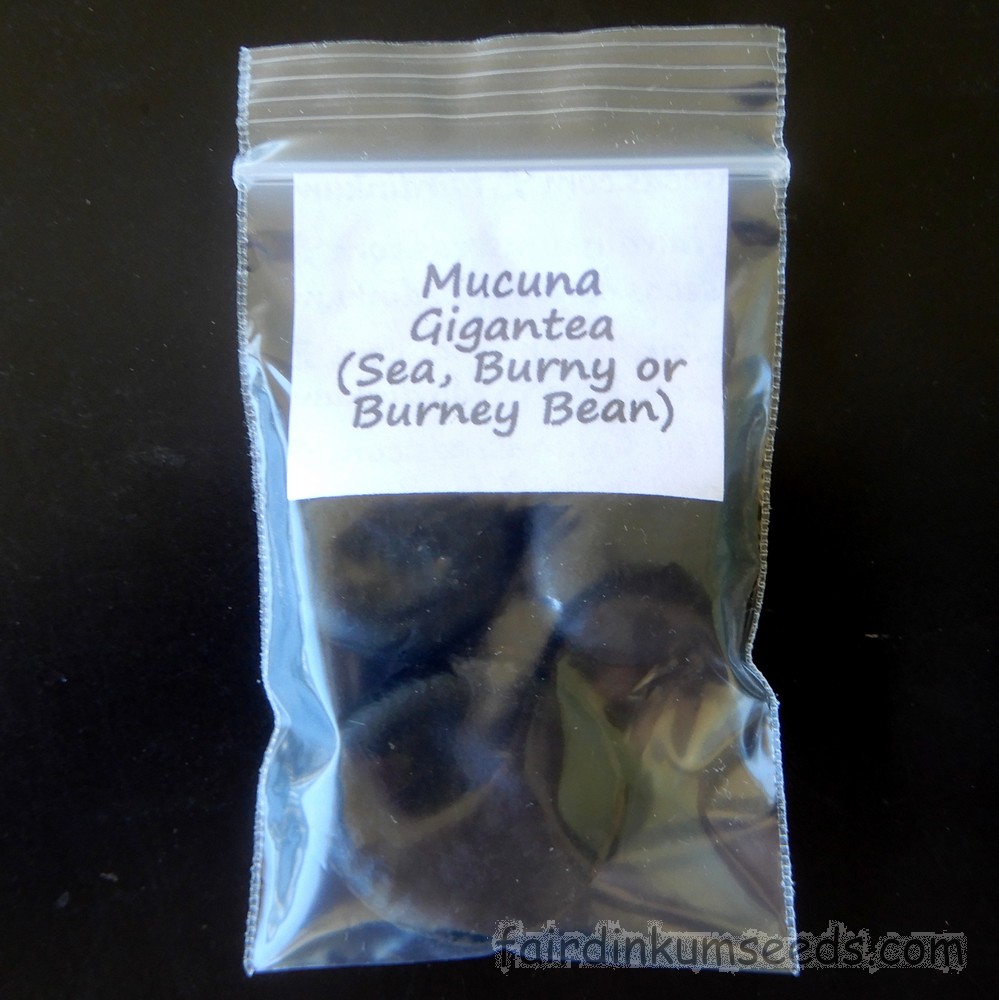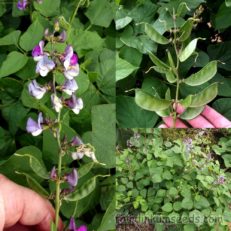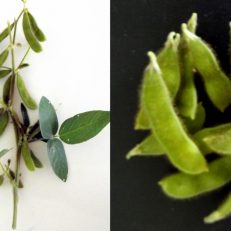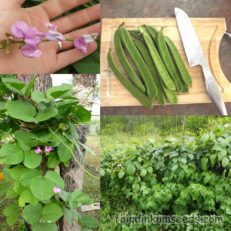Please read text!
Burny Beans Mucuna Gigantea Burney Bean Seeds
Packet of 3+ huge bean seeds!
Alrighty folks, now this one really makes me nostalgic.
Ever since I first saw them as a kid I have wanted to grow one of these guys and now I have a whole heap.
Used extensively all through warmer coastal Australia by mongrel kids to terrorize each other on the playground, and if you’ve come across them it’s an experience you won’t have forgotten.
The “joke” is you hold one in your hand casually till someone sees and asks what it is. You reply secretively “It’s a Burny Bean”. They then ask to touch it, you decline, which is immediately followed by the question “Why is it called a Burny Bean?”
You tell them it’s MAGIC!, and tell them to hold out their hand.
You then bend down rub the seed on the concrete really fast for a couple seconds till it heats up like larva from the friction, and when you place it rubbed side down onto their hand it burns the crap out of them like a lit cigarette.
Ah, the good old days, aren’t kids grand…
While that important lesson helped me learn not to go randomly trusting folks, the main reason I always wanted one is the super huge massive tree eating vine, and for the beautiful chandelier of cream and green coloured flowers. Never seen a flower with any green before(unfortunately missed getting a picture this time), and with me coming from a cold southern location that was just mile after mile of boring open farmland, the sheer size of the vines always gave me a sense of awe.
It’s hard not to be impressed by the way they climb right up these massive trees, far bigger than anything I’d seen before. Not only do they reach the top, they completely smother it and take over.
Like something I’d only ever seen TV in the heart of Africa or the Amazon and I truly thought it was a dark a sort of spooky paradise hiding in there, just waiting to be discovered.
Magical stuff, I still get that feeling creeping through the scrub underneath them.
Some of the other names they are known as include black bean, burney vine, burnie bean, burnie burnie, burnie vine, burny bean, burny burny, burny vine, Dolichos giganteus, kakavalli, seabean, sea bean, sea vine, velvet bean, Dolichos giganteus, Negretia gigantea, and Carpopogon giganteus.
The “sea bean” bit is because they can travel for years washing down jungle rivers then float all the way across oceans to colonize distant coastal areas. Because of this they are found in Africa, most of Asia, and islands all throughout the Indian and Pacific oceans.
Here in Australia they are native to northern New South wales, Queensland, Northern Territory, Western Australia and right the way up to New Guinea.
They are used for jewellery making and for medicines due to the high L-dopa content, and the pods and young growth have small irritating hairs which were apparently the main ingredient in “itching powder”. Another childhood classic.
They were also eaten by various Aussie Aboriginal groups, and in Brazil, India and Africa too but I’m told they were generally eaten last when other stuff was getting scarce.
They do have ~30% protein and 10% fat but they also require treatment to make them safe to eat which is normally grinding, soaking, cooking, grinding, making into bread and cooking again. I’ve had a couple cracks at it and it was a major hassle and the results were pretty crappy and who knows if they were actually safe or not. Not something I recommend.
But as a purely cool novelty plant, or for revegetation works it is a beauty! It provides so much habitat for the critters and the range of species all making themselves at home in the shelter of the vines is amazing!
Germination is very reliable and the seeds remain viable for many years in storage.
The only thing to remember is that they are designed to get battered around for months or years without losing any precious food stores.
That means if you just stick them in the dirt they may just sit there dormant for a very long time just like they do in nature.
To speed this natural dormancy up just Scarify them by making a couple cuts into the flat side of the seed shell and soaking in hot but not quite boil water overnight.
The next day plant them out about an inch deep with the cut side facing down. Down NOT up! The direction you face the cut side really does matter and it is very important water doesn’t pool inside the shell like a cup and rot it out. It’s the only way I have ever had a failure growing these guys.
Scarify, hot water soak, and cut side down about an inch deep in sandy well draining soil mix. That’s it and with that method I get ~90% here at Gin Gin 4671 QLD.
They will generally be popping anywhere from a couple weeks to a couple months time. Easy as.
Home grown by me and the Mrs, no chems, no nasties, no problems!!!
